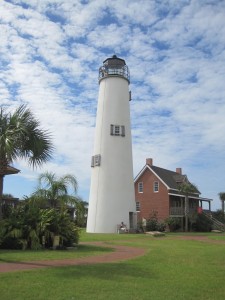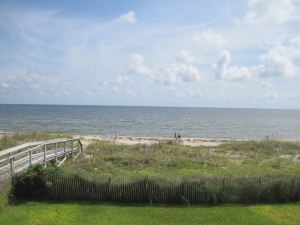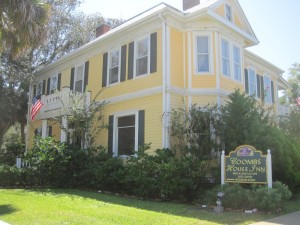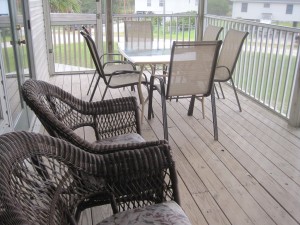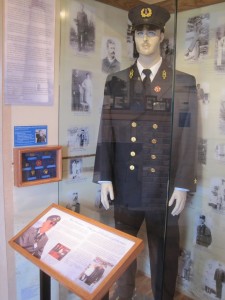Along the unspoiled “Forgotten Coast” of Florida’s Panhandle, Apalachicola, as part of Franklin County, sits atop Apalachicola Bay and at the mouth of the Apalachicola River. This rustic seaside fishing village has retained its maritime heritage. In the 19thcentury, it flourished because of the South’s cotton that was shipped from its port, the third largest on the Gulf of Mexico. Later came the lumber industry, and then the commercial harvesting of oysters, blue crab, shrimp and finfish.
With more than 900 historic sites, the National Trust for Historic Preservation named it as one of America’s Dozen Distinctive Destinations in 2008. The city reflects the “true” (meaning: pre-Disney) Florida coast with meticulously-restored Victorian homes, clapboard cottages, independently-owned shops, one small theater, lighthouses and a grimy working waterfront. With no high-rise glitzy hotels, visitors usually rent vacation homes, or check into historic inns or quaint B&Bs.
The Bay
Apalachicola Bay rates as one of the world’s most productive estuarine systems with 186 species of fish. Just ask the 40% of the area residents who work on the bay. Oystermen make up a large portion of those workers. Underwater oyster bars bring both good and bad news to fishermen: the bars can be hazardous to boats, but, on the other hand, they attract the fish. An expert fishing guide knows where the fishing hot spots are and where to avoid the troublesome oyster bars. If you choose to go it alone, follow a good chart.
The Beach
Locating a fine, pristine beach is like looking for hay in a haystack, but many people head for the one at St. George Island State Park because of its reputation. It has been on the list as one of the “Top Ten Beaches in America” by Dr. Beach for three years. Bathers like the white powder sand, but birders come looking for migrations in the spring and fall.
Lodging
Coombs House Inn is a posh Bed and Breakfast that Florida Monthly Magazine named “The Best B&B in Florida.” Built in1905, the mansion sustained extensive damage in 1911. It was restored, but in 1960, it was abandoned. The international decorator, Lynn Wilson, bought it in 1994, and transformed the structure into a superior inn. Complimentary amenities include breakfast, afternoon tea, free Wi-Fi, private baths and cable TV. Some rooms have refrigerators.
Gibson Inn was built in 1907 as a first-class hotel and is now on the National Historic Register of Historic Places. I especially admired the “Cracker” architecture, a traditional Florida style characterized by tin roofs, wood construction and wraparound porches. The antique furnishing reminded me of the past when men wore white linen suits and women carried parasols. Within the 30 guestrooms, there are private baths, wireless internet, cable TV and telephones.
I stayed at one of the houses rented by ResortVacation Properties. Located on St. George Island, 333 houses have from one to eight bedrooms, fully equipped kitchens, central air and heat, cable TV, linens, decks and free Wi-Fi. Some homes are pet-friendly. My house had a large living room/kitchen with two bedrooms, a screened-in porch and a pool.
Must-See
I, like many other people, am fascinated by lighthouses. Cape St. George Lighthouse is the fourth edifice, the first being built in 1833. The third one collapsed in 2005. Following the original blueprints, the lighthouse was reconstructed from 2007 to 2008, using salvaged bricks from the former building. Next door is the Lighthouse Keeper’s House and Museum that displays marine artifacts and rooms that shows how the light keeper and his family lived. Also visit the St. George Island Visitors Center on site.
You don’t hear that much about old-fashioned Florida, but once you visit Apalachicola, you’re sure to remember it.
